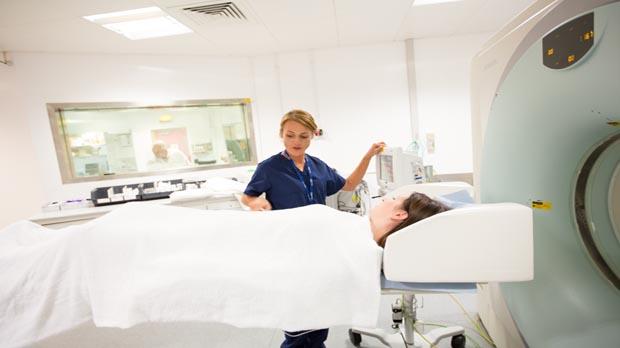
Around 1 in 5 people diagnosed with cancer in the UK take part in a clinical trial.
These 2 studies looked at Sativex for cancer pain when other strong painkillers weren’t working.
It is quite common for people with advanced cancer to have pain. Advanced cancer means the cancer has spread or come back since it was first treated.
There are different ways to treat cancer pain, including strong painkillers called  . But sometimes, even opioids can’t completely control the pain. So, researchers are looking for ways to help people in this situation.
. But sometimes, even opioids can’t completely control the pain. So, researchers are looking for ways to help people in this situation.
In this study, they looked at a drug called Sativex. The main active ingredients of Sativex are tetrahydrocannabinol (THC) and cannabidiol (CBD). Both molecules come from the cannabis (marijuana) plant.
In the UK, Sativex is already used to help with symptoms of a disease called multiple sclerosis. It can also work as a painkiller.
In this study, some people had Sativex and some had a dummy drug ( ).
).
The aims of the study were to:
399 people took part in study 1. They were put into 1 of 2 groups at random, and:
Everyone slowly increased their dose for 2 weeks until they found the best dose to have. They then continued with this dose for 3 more weeks. They had treatment for 5 weeks in total.
In study 2, there were 406 people who had Sativex for 2 weeks. People who had a certain level of improvement in their pain were then put into 1 of 2 groups at random. This included 206 people, and:
They had treatment for 5 more weeks.
In both studies, neither the people taking part nor their doctor knew which treatment they were having. This is called a double blind study.
Sativex is a mouth spray. The maximum dose was 10 sprays per day. On average people had about 6 sprays of Sativex or the dummy drug each day.
The study team had the results for:
The study team looked to see if their pain scores had improved while having treatment. But the researchers found no difference between those who had Sativex and those who had the dummy drug.
In both studies, quite a few people stopped having treatment early. The most common reasons were:
And unfortunately, some people died from their advanced cancer while taking part.
The study team think that perhaps the results from these two studies showed that Sativex hadn’t worked as well as they had hoped because of the number of people who stopped treatment early. So, there wasn’t enough information (data) available.
Side effects
Most people reported at least 1 side effect from treatment. The most common side effect related to Sativex was increased sleepiness.
More than double the number of people in the Sativex group stopped treatment due to a side effect compared to those having the dummy drug.
Conclusion
The study team concluded that Sativex didn’t work better than the dummy drug to help people with long term pain caused by cancer.
This study has increased knowledge of what does and what doesn’t work for people with pain caused by cancer.
We have based this summary on information from the research team. The information they sent us has been reviewed by independent specialists ( ) and published in a medical journal. The figures we quote above were provided by the trial team who did the research. We have not analysed the data ourselves.
) and published in a medical journal. The figures we quote above were provided by the trial team who did the research. We have not analysed the data ourselves.
Please note: In order to join a trial you will need to discuss it with your doctor, unless otherwise specified.
Dr Andrew Davies
NIHR Clinical Research Network: Cancer
GW Pharma Ltd
If you have questions about the trial please contact our cancer information nurses
Freephone 0808 800 4040

Around 1 in 5 people diagnosed with cancer in the UK take part in a clinical trial.